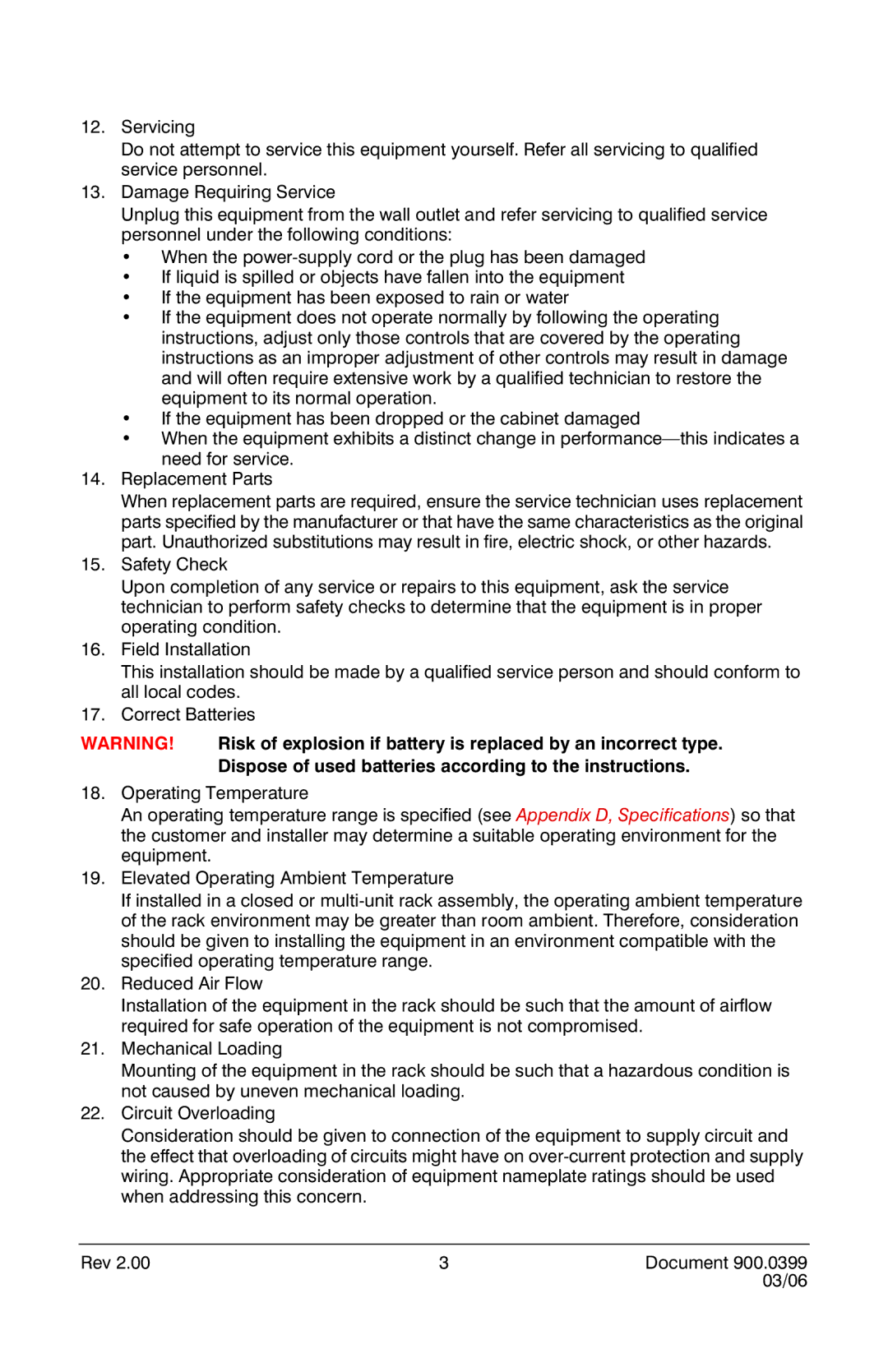12.Servicing
Do not attempt to service this equipment yourself. Refer all servicing to qualified service personnel.
13.Damage Requiring Service
Unplug this equipment from the wall outlet and refer servicing to qualified service personnel under the following conditions:
•When the
•If liquid is spilled or objects have fallen into the equipment
•If the equipment has been exposed to rain or water
•If the equipment does not operate normally by following the operating instructions, adjust only those controls that are covered by the operating instructions as an improper adjustment of other controls may result in damage and will often require extensive work by a qualified technician to restore the equipment to its normal operation.
•If the equipment has been dropped or the cabinet damaged
•When the equipment exhibits a distinct change in
14.Replacement Parts
When replacement parts are required, ensure the service technician uses replacement parts specified by the manufacturer or that have the same characteristics as the original part. Unauthorized substitutions may result in fire, electric shock, or other hazards.
15.Safety Check
Upon completion of any service or repairs to this equipment, ask the service technician to perform safety checks to determine that the equipment is in proper operating condition.
16.Field Installation
This installation should be made by a qualified service person and should conform to all local codes.
17.Correct Batteries
WARNING! | Risk of explosion if battery is replaced by an incorrect type. |
| Dispose of used batteries according to the instructions. |
18.Operating Temperature
An operating temperature range is specified (see Appendix D, Specifications) so that the customer and installer may determine a suitable operating environment for the equipment.
19.Elevated Operating Ambient Temperature
If installed in a closed or
20.Reduced Air Flow
Installation of the equipment in the rack should be such that the amount of airflow required for safe operation of the equipment is not compromised.
21.Mechanical Loading
Mounting of the equipment in the rack should be such that a hazardous condition is not caused by uneven mechanical loading.
22.Circuit Overloading
Consideration should be given to connection of the equipment to supply circuit and the effect that overloading of circuits might have on
Rev 2.00 | 3 | Document 900.0399 |
|
| 03/06 |
